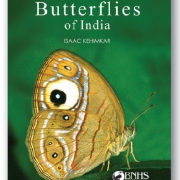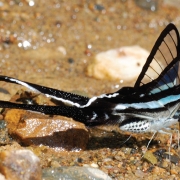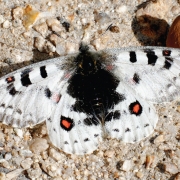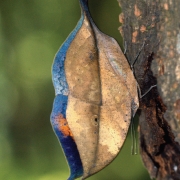
Etcetera
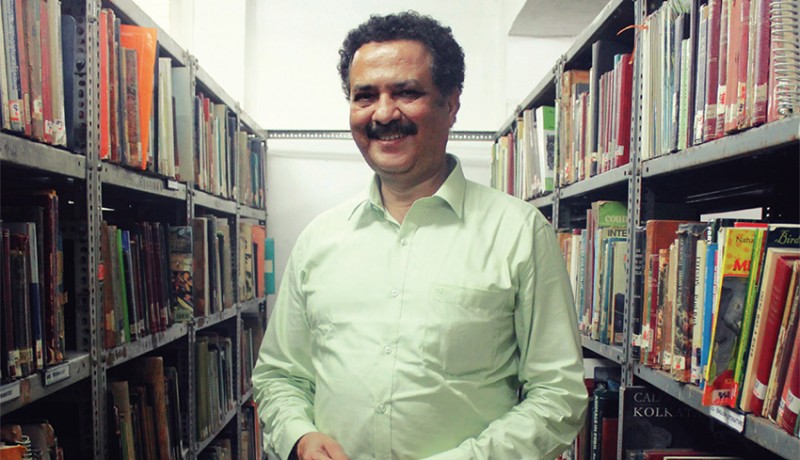
Natasha Rego meets India’s ‘Butterfly Man’ Isaac Kehimkar
Himalayan expeditions are meant to test the limits of patience and human endurance. But Isaac Kehimkar is not in it to conquer new peaks. For this naturalist, the prize at the end of every rocky road is a bunch of dazzling winged jewels. “In 2005, when I finally spotted seven Dragontail butterflies with their spectacularly translucent wings atop a hill in Arunachal Pradesh, I trembled so much with excitement that I couldn’t hold my camera still,” reminisces the Navi Mumbai-based naturalist, who has been documenting India’s butterflies for the past 30 years.
Kehimkar, who will retire as deputy director of the Bombay Natural History Society (BNHS) later this year, says it takes some patience and a whole lot of crazy to chase butterflies for a living. His recent book, Butterflies of India (₹ 1,800; BNHS), is a testament to his passion for these colourful creatures. A field guide, the book contains photographs and information on over 1,000 species and sub-species of butterflies from India, Pakistan, Bangladesh, Bhutan, Sri Lanka and a few from Afghanistan. He has trekked up the mighty Himalaya and through the damp forests of the Western Ghats in pursuit of the 1,500 species of butterflies that inhabit the subcontinent. “I have encountered at least 900, so there’s quite a long way to go,” he says with an easy smile.
In times when dreams are often synonymous with acquiring material possessions, Kehimkar is a refreshing inspiration—his pursuits always lead him to Eden. But chasing butterflies comes with many challenges, not least of which are shaking off blood-sucking leeches and microscopic ticks, whose nasty bite takes months to heal.
Kehimkar has also faced far bigger threats, like the time he stood face-to-face with a herd of elephants when he was looking for the Gladeye Bushbrown butterfly in the Parambikulam forest in Kerala. “There was nothing to do but slowly back away. Luckily for us, they mock-charged but kept a safe distance.” Following that harrowing experience, he found and photographed the Gladeye Bushbrown, which even made it to the cover of his new book. In the Northeast, the dangers are of a human kind, given the political volatility of the region. “A fellow naturalist was kidnapped for 81 days,” he says. But, for him, finding the spotted Apollo butterfly, which lives high in the cold Himalayan reaches, was motivation enough.
Kehimkar’s obsession with butterflies was triggered in the early 1980s, while researching an article he wrote for Sanctuary magazine on the lifecycle of the Common Mormon butterfly. “The beauty in the details hooked me.” Then the librarian at BNHS, Kehimkar wrote regularly for Sanctuary magazine and also for the BNHS journal, Hornbill. He has since been on the editorial board of Hornbill, co-authored a book titled Butterflies of India (1992), and written Common Indian Wildflowers (2000) and The Book of Indian Butterflies (2008), a runaway success.
So how does a hardcore Mumbaikar grow up to be a butterfly chaser? Kehimkar was raised in the city’s backyard Deonar, which was then a far cry from the dumping ground it is today. A sprawl of paddy fields and fisheries located far from the hustle and bustle of what was then Bombay city, this natural paradise was his stomping ground. Encouraging his son’s love for nature—little Isaac maintained a small plant nursery at home—Kehimkar’s father would buy him books on butterflies, birds and plants. When he was in Class 8, his parents bought him a little box camera, a gift that would leave a lasting impression on him.
The lad went on to graduate with a degree in political science and psychology, before he took up a sales job with Lakmé. He gave up the job as soon as he had saved enough to buy his first Minolta SLR camera. The turning point came when Kehimkar volunteered for a month-long herpetology workshop by BNHS. “It didn’t pay but it was the kind of work I had dreamt about. My mother was furious. She was worried no one would marry me,” he chuckles.
The budding naturalist landed a job as assistant librarian at BNHS in 1979. A year later, he acquired a degree in library sciences and became the resident librarian. This is where his real ‘schooling’ began. “I had 25,000 books at my disposal, and it is a place where you meet a lot of great people and watch them work.”
An encounter with India’s famous ornithologist Dr Salim Ali is indelibly etched in his memory. “One day, I asked him, ‘Sir, how do you have such beautiful handwriting?’ He said, ‘I didn’t always have handwriting like this, I worked on it!’ It’s one of the many lessons that stayed with me.”
Kehimkar soon plans to launch an NGO called iNatureWatch, to run nature camps and spread the word on the importance of conserving what remains of our wildlife. “In Victorian times, it was a fad to catch and kill butterflies and collect them like stamps—in the name of science. But times have changed. Now we can appreciate, watch and garden for butterflies without even touching them. That’s the way forward,” says the ‘Butterfly Man of India’. We had better listen!
HOW TO STALK A BUTTERFLY
- Set out in the morning: butterflies bask in the morning sun before taking flight
- Walk like a chameleon: take two steps forward and one step back
- Move like a sloth: avoid sudden movements that can create a gush of air
- Cast the shadow of a vampire: don’t let your shadow fall on the butterfly
- Use the stealth of an owl: though they are not sensitive to noise, butterflies can sense harsh vibrations.
Photo: Natasha Rego Featured in Harmony — Celebrate Age Magazine January 2017
you may also like to read
-
Cracking the longevity code
Small yet impactful choices can be game-changers, writes Srirekha Pillai At 102, there’s no stopping Chandigarh-based Man Kaur, the world’s….
-
Home, not alone
While a regulatory framework is vital for senior-care facilities, the need of the hour is to develop an ecosystem to….
-
Birthday Girl
Published in a special edition to honour Japanese master storyteller Haruki Murakami’s 70th birthday, Birthday Girl (Penguin; Rs 100; 42….
-
A huge treat for music lovers
Published as the revised and updated second edition, Incomparable Sachin Dev Burman (Blue Pencil; Rs. 599; 470 pages) the authoritative….



